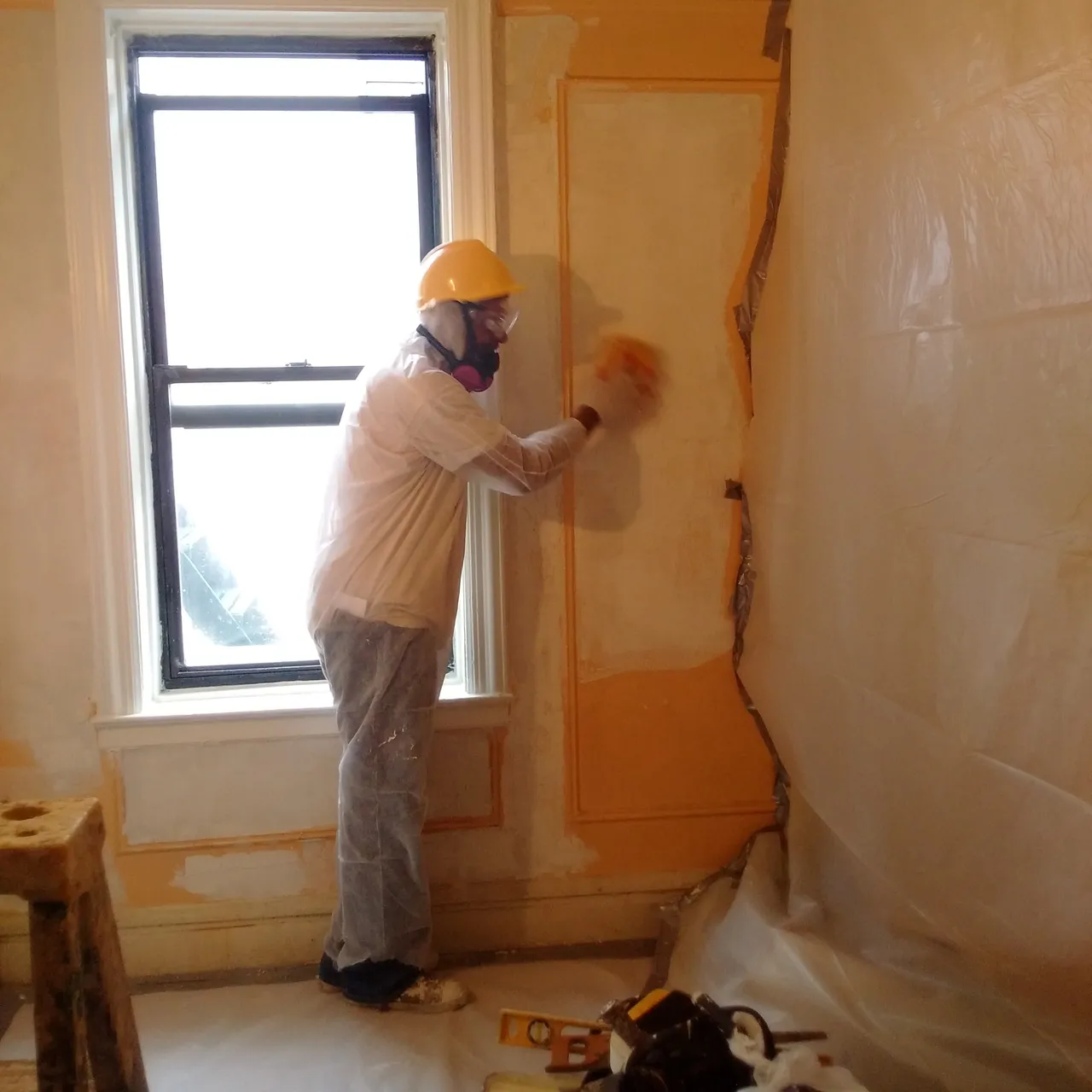Relied On Lead Paint Removal Company-- NYC's Premier Lead Reduction Service
Relied On Lead Paint Removal Company-- NYC's Premier Lead Reduction Service
Blog Article
Step-by-Step Refine for Effective Lead Infraction Removal
Addressing lead violations demands a meticulous and structured approach to guarantee both safety and security and regulatory compliance. The trip begins with the accurate detection and assessment of contamination resources, using innovative diagnostic tools. Following this, adherence to government and state policies is critical to developing an effective remediation strategy. Such a strategy needs to detail the particular methods and timelines for activity. The real remediation requires competent personnel to implement these strategies while purely complying with safety methods. What occurs after the remediation is finished? The response depends on recognizing the crucial post-remediation methods that guarantee long-term safety and security and neighborhood well-being.

Discovery and Evaluation
Discovery and assessment are vital actions in the removal of lead violations. To guarantee a reliable removal procedure, it is important to carry out a detailed examination of the environment where prospective lead exposure exists.
This consists of reviewing the degree and seriousness of contamination, as well as identifying populations at threat, especially kids and pregnant females. The collected data should be diligently recorded to support the growth of a reliable remediation strategy.
In addition, it is imperative to focus on areas with the highest degrees of contamination and those that position the greatest wellness threats. Efficient interaction with stakeholders, consisting of homeowner, homeowners, and public health and wellness officials, is critical for making sure that all celebrations are informed regarding the searchings for and the succeeding actions needed for remediation. This first detection and analysis phase prepares for a successful lead offense remediation procedure.

Lawful and Regulative Compliance
Navigating the landscape of lawful and governing compliance is an essential facet of effective lead violation remediation. Conformity ensures not only the safety of afflicted populaces however additionally the trustworthiness and lawful standing of the organization liable for remediation.
State and regional laws can differ, often imposing additional responsibilities or more rigid criteria. A detailed understanding of all relevant lawful structures is vital. This involves careful documentation of all removal tasks to demonstrate compliance. Failure to stick to these regulations can result in extreme fines, consisting of substantial penalties, lawful action, and reputational damage.
Engaging lawful specialists concentrated on ecological law can facilitate browsing these intricacies. Routine training and certification for all employees associated with the remediation process are additionally mandatory to make certain adherence to security and governing criteria. By focusing on legal and governing compliance, companies can successfully reduce risks and accomplish a successful removal outcome.
Preparation the Remediation
Effectively preparing the removal of lead violations begins with a detailed assessment of the polluted website. This data-driven approach guarantees that removal initiatives are appropriately targeted and effective.
When the contamination is mapped, a threat assessment ought to be carried out to review potential health dangers to human beings and the setting. Lead Violation Removal in NYC. This assessment ought to think about aspects such as like this direct exposure paths, populace vulnerability, and ecological impacts. The insights gathered will develop the basis for choosing an ideal removal approach
Ultimately, establishing clear, achievable objectives for the remediation project is essential. These goals ought to line up with regulative requirements and stakeholder expectations to guarantee compliance and neighborhood acceptance. Developing a thorough remediation plan that describes this page techniques, timelines, and resource allotment will facilitate an organized strategy to the cleaning process.
Additionally, it is important to engage with stakeholders early and keep clear communication throughout the planning phase. This consists of notifying neighborhood areas, getting needed licenses, and coordinating with regulatory firms to make certain all lawful and procedural needs are fulfilled. A well-crafted remediation plan not just attends to the contamination efficiently but additionally develops count on and cooperation amongst all celebrations involved.
Implementing the Remediation
With a well-structured remediation strategy in place, the emphasis moves to the real execution of the remediation tasks. This phase includes mobilizing the essential resources, consisting of proficient personnel, customized devices, and high-quality products. Begin by clearly defining roles and duties to guarantee liability and seamless control among group participants.
The preliminary action in execution is to secure the website. This consists of establishing control locations to stop lead dirt and debris from spreading, along with employing air purification systems to maintain air high quality. Next off, wage the removal of lead-based materials. Make use of methods such as wet scuffing, chemical removing, or encapsulation, depending on the intensity and area of the contamination. It is crucial to follow safety procedures, consisting discover here of making use of individual protective tools (PPE) and correct disposal of hazardous materials.
Throughout the removal procedure, conduct routine examinations and air quality keeping track of to guarantee compliance with regulative requirements. Efficient communication with stakeholders, including homeowner and occupants, is essential to keep them informed of development and any type of unforeseen advancements. By carefully complying with these steps, the remediation tasks can be implemented successfully and properly, inevitably mitigating lead threats.
Post-Remediation Approaches
Post-remediation methods play an important function in guaranteeing the long-term success of lead offense removal efforts. These techniques encompass recurring tracking, maintenance, and area education and learning to avoid future lead exposure and ensure a secure atmosphere.
First, regular surveillance is necessary. This includes periodic screening of the previously influenced areas to ensure that lead degrees stay within safe limitations. Homeowner must establish a timetable for these tests, preferably in partnership with qualified environmental professionals.

Third, informing the area plays a critical duty in sustaining the benefits of removal. Homeowners and building supervisors ought to be educated regarding the dangers of lead exposure and the ideal practices for keeping a lead-safe environment. Workshops, educational pamphlets, and neighborhood conferences can be efficient devices for disseminating this info.
Conclusion
Successful lead offense remediation needs a comprehensive, methodical strategy encompassing discovery and analysis of contamination, adherence to legal and regulative criteria, meticulous planning, and reliable implementation of remediation efforts. Post-remediation approaches, including constant tracking and area education and learning, are necessary to maintain a lead-safe setting. Collaboration with environmental experts makes certain ongoing compliance and protection of public health and wellness. This systematic procedure emphasizes the importance of thoroughness and watchfulness in attending to and reducing lead contamination.
Report this page